
In every election cycle, there are key words and themes that have the potential to capture the zeitgeist – the nation’s vibe. In other words, what most of us are thinking and feeling at the moment. Of course, we’re hopelessly divided along so many lines that what I believe is the key theme runs counter to what you think it is.
But despite our different viewpoints, we’ve seen themes – and even a single word – become the emotion of the moment. Back in 2008, it was Obama and “Change” that captured the moment. In 2016, it was Trump’s powerful theme, “Make America Great Again.”

And now in 2024, with a mere 77 days before the election, it appears “joy” may be emerging as the word many Americans are feeling – or aspiring to feel. The Harris/Walz campaign is banking on it, leaning into the word – the theme, the philosophy, the vibe – from its first moment together exactly a month ago.
It is likely you will hear and see references to it when the Democratic National Committee convenes in Chicago this week for their convention.
But is it taking hold?
I went to my go-to when it comes to getting a sense for ideas, people, and trends that are getting buzz – Google Trends. It’s a handy tool that measures the terms billions of us search for over a period of time. If you focus in the last 90 days in the U.S., “joy” has emerged as a key word many of us are thinking about (the blue line on the chart below).
In fact, you can see it bubble up around the third week in July – that’s when Biden announced his intention to pull out of the race, quickly endorsing his Veep, Kamala Harris, who has been all over connecting with “joy” in her campaign language.
While “joy” is not skyrocketing from where it was in May or June, the search line indicates the term has been strong all along.
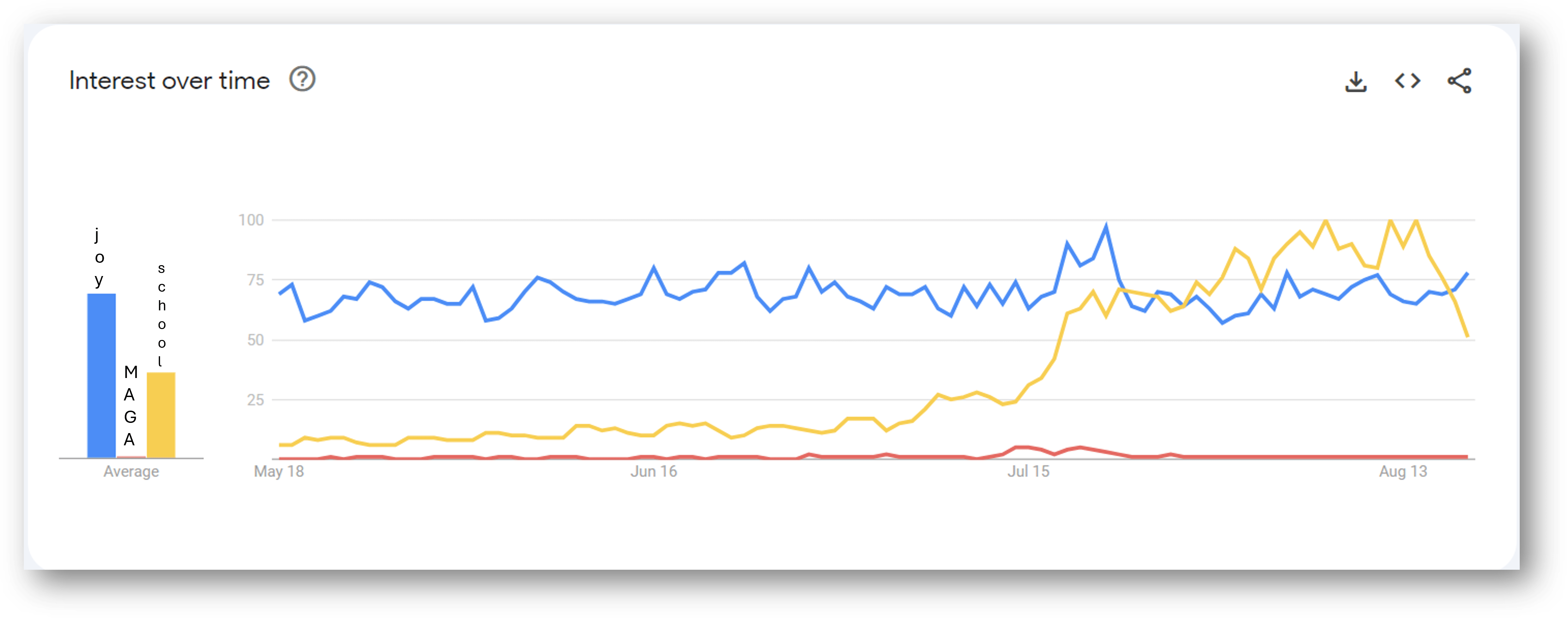
For contrast, I added “Make America Great Again” (the red line), and you can see how tepid it has become (at least compared to “joy”). And to drop in something I thought would be popular as a general term of interest, I added “back to school” (the yellow line). You can see it power up in early August, even passing “joy.” But now that school has begun to start up, it has begun to fall back.
In case you’re wondering, Google doesn’t provide us with actual numbers. Its graphs are like indices – you get a relative number where the peak for any variable tops out at 100. Still, it’s a way to compare variables. As we’ve learned in the Internet Age, if consumers are consistently searching for something or someone, it is of interest to them. And when a lot of people are doing it, there may be something going on.
And so it is with “joy.” Put your politics aside (please, let’s not go there), and think about what the “joy train” might mean to your promotion, your marketing, your language, your morning show, your contesting.
the “joy train” might mean to your promotion, your marketing, your language, your morning show, your contesting.
Actually, JacoBLOG readers may recall that it’s been a topic of conversation for a few years now. Back in December of 2020, when COVID collided with Christmas that year, I blogged about joy in one way, shape, or form three times during the run-up to the holidays in that critically important year:
“10 Ways Your Radio Station Can Find Joy This Holiday Season” – November 2020
“Is There No Joy In Radioville?” – December 2020
“Two Words: Find Joy”– Christmas Day 2020
I went back to all three in writing this post, and as you might expect, they capture the moment of the pandemic at the end of 2020, a very troubling time for everyone, following living most of that past year under the shadow of fear and stress about our lives. At that time, we were working from home, wearing masks, and waiting for the vaccine to show up in drug stores and doctor’s offices.
Given that backdrop, my advice to most radio stations during that time: find the joy.
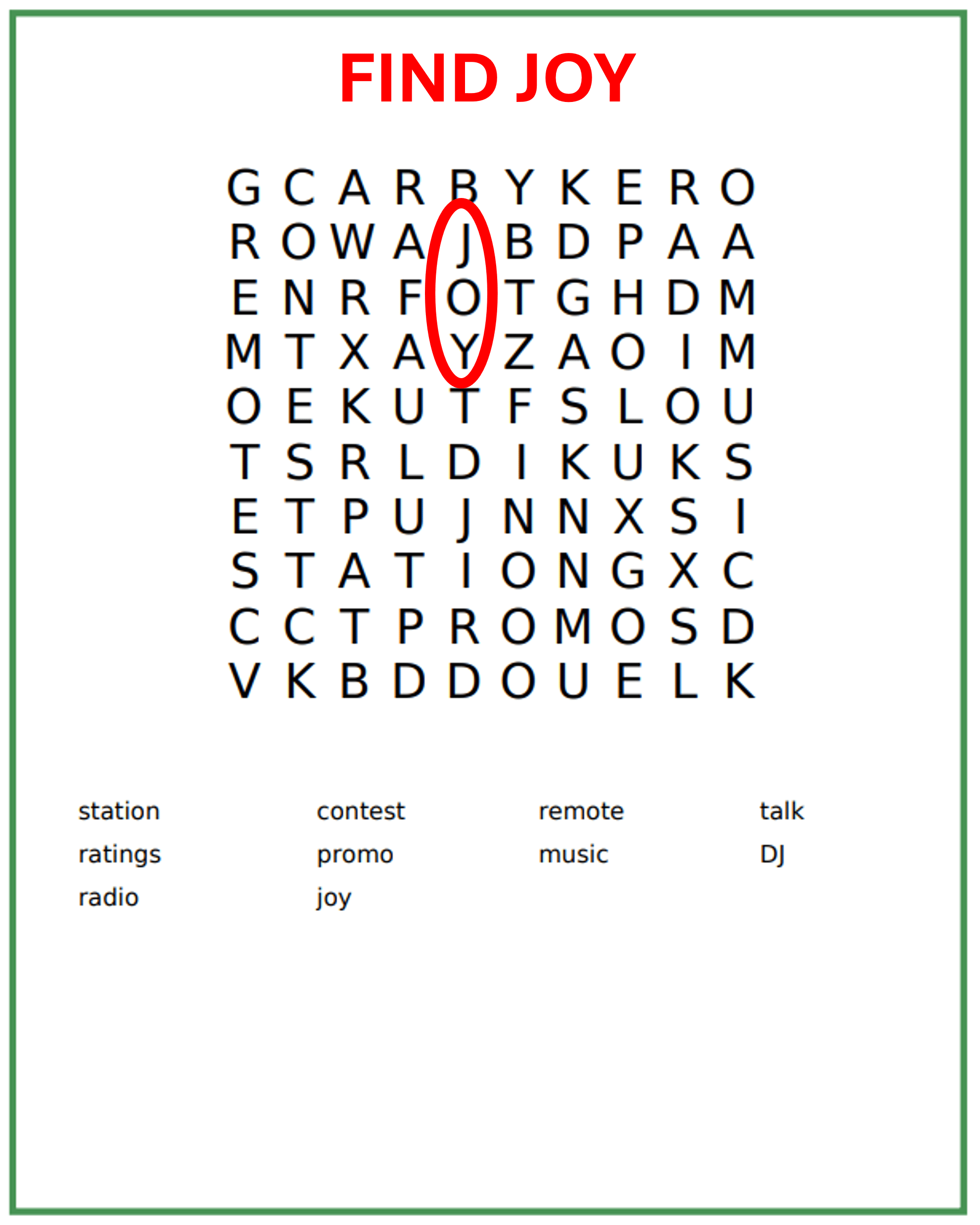
Here in the second half of 2024, the same admonition is in play, albeit for different reasons. That’s because circumstances have most definitely changed.
I think one thing we can be pretty sure about, based on our past experience and even the deluge of negative commercials we’re already seeing on television (especially in so-called “battleground states”) is that 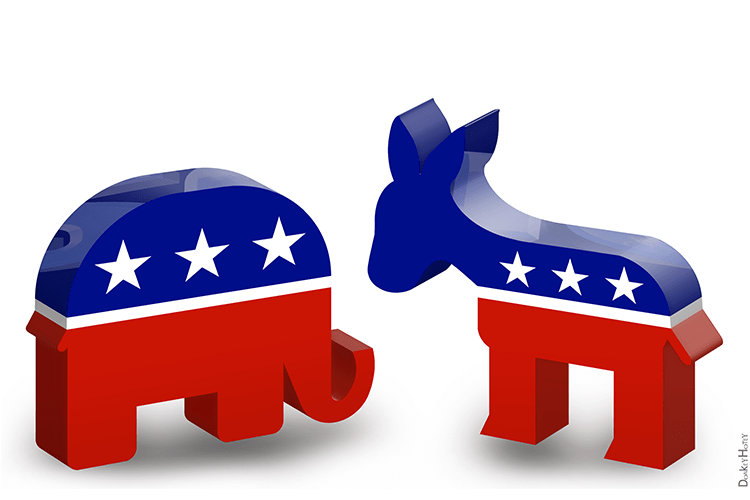 the political environment in commercial media is toxic and will only intensify as the days count down to election day.
the political environment in commercial media is toxic and will only intensify as the days count down to election day.
While it remains to be seen whether radio will significantly cash in on political ad spend leading up to November 5, there will most certainly be political advertising in the “battleground states,” and perhaps several others as this race gets more hard fought and competitive.
While that may lead to improved revenue results in those hotly contested markets, it will also mean commercial radio will become increasingly more unlistenable, especially around those already lengthy commercial stopsets.
Therefore, what are consumers – radio listeners, specifically – expecting, craving, hoping for – during this hyper-intense time?
Of course, the answer is going to hinge on your radio brand and the specific feelings you want to leave your listeners with. For many music stations, your playlist alone can provide much-needed relief and escape. Are there some happy-edged songs you might want to play more often? And are there some sad and even depressing songs that could use a “time out?”
This fall may very well be more about how you make your audience feel, rather than the images you vie for, the cash you give away, or the benchmark bits you do again and again.
Now more than ever, will it be the community and charity projects your stations and your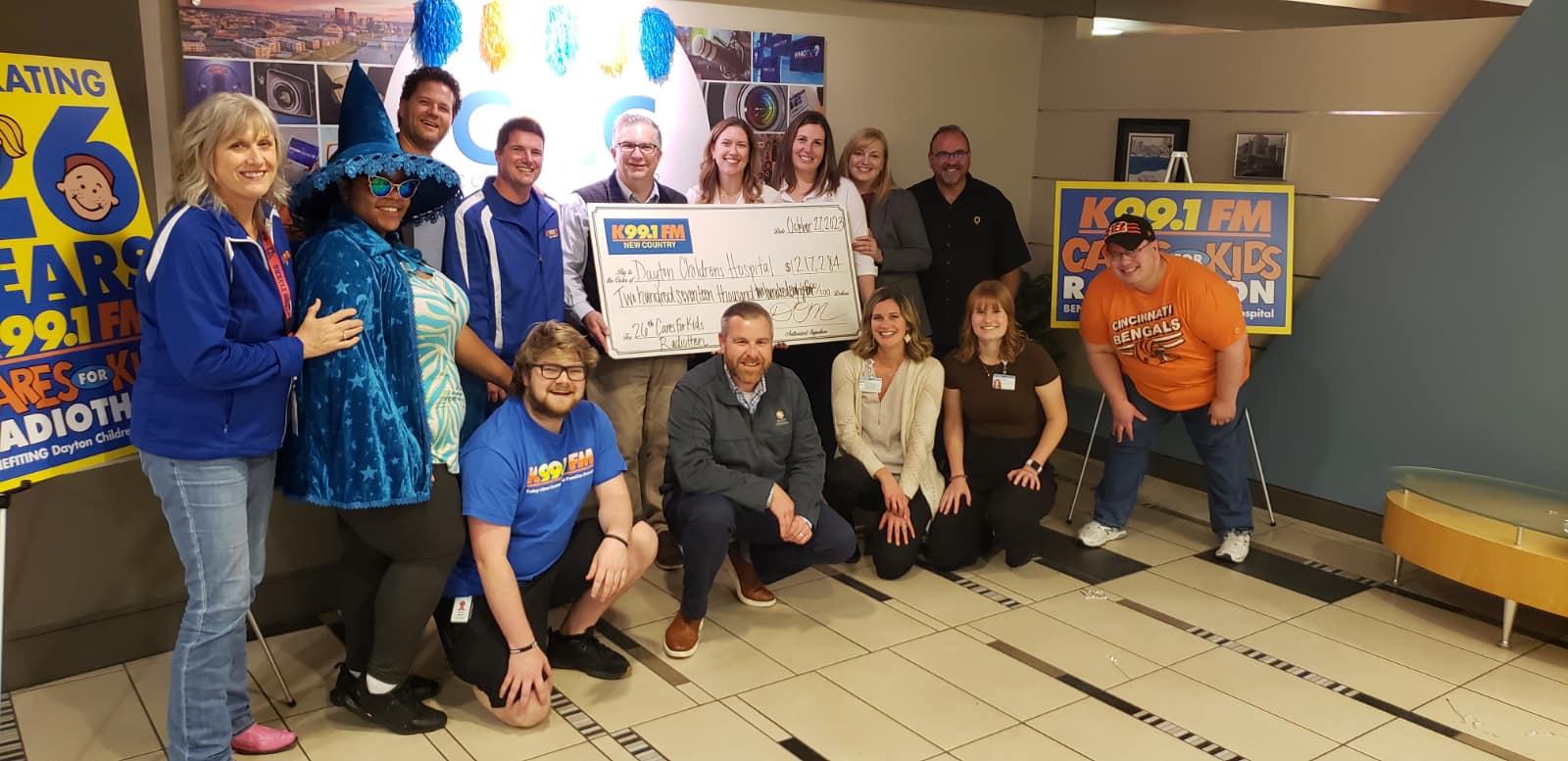 personalities champion and support? Are we entering a new phase where these activities will become more important than whether a talent shocks their audience and their metro?
personalities champion and support? Are we entering a new phase where these activities will become more important than whether a talent shocks their audience and their metro?
If you’ve got a funny morning show or personalities whose job it is to make people laugh, you’re in the pole position. But how can they emphasize the positive, that glass half full sentiment, and find the joy?
But I know some of you work for talk stations, and specifically with outlets, shows, and hosts that are overtly political. What’s your move? And how do you find joy in the fabric of your content?
are overtly political. What’s your move? And how do you find joy in the fabric of your content?
No matter your political persuasion, we are living in highly emotional times. The environment of the past decade or so has never been about metrics or even logic. What we believe in and who we support aren’t about employment data, the GNP, white papers, or who is producing the most oil.
It is being shaped by how the candidates make us feel – for better or for worse. A Venn diagram of Trump and Harris’ philosophies and ethics would reveal scant common ground. But both candidates intrinsically understand how the election results will be greatly determined by the emotional benefits voters derive from either or both of them.
For broadcast radio, the determinant of success this November may not have a whole lot to do with logic – who’s playing the most ’90s, who’s giving away the most cash, or who features traffic and weather at the 8’s.
It’s not a matter of using the J-word. It is about exuding a positive feeling and giving the audience a smile. I’m seeing more and more brands employing this strategy.
Earlier this year, Target launched a campaign called “That Target Feeling,” a humorous situational spot using the Michelle Branch 2001 hit “Everywhere.” The spot is goofy, but it does make you smile – and that’s the goal.
The spot leverages actual social posts and mentions Target receives. Lisa Roath, the company’s CMO, explains the connection this way:
“We know Target is the happy place for millions of guests, and we’re excited to show what that looks and feels like through their eyes. This campaign is inspired by real experiences shoppers have shared on social – those small, fun, and sometimes unexpected moments of discovery and delight in our aisles that make us Target. We’re lifting that joy up in our marketing this year as we continue leaning into nostalgia and humor in new ways.”
In a simpler and less subtle gimmick, I heard an Omaha Steaks ad on SXM over the weekend promoting a sale. The discount code? JOY.
But it turns out joy isn’t just a marketing gimmick. The PETERMAYER ad agency in New Orleans has done research on the concept and discovered it is a measurable concept. In May, Amy Hubbell, director of intelligence, says the feeling that leads to a laugh or smile is a real consumer reaction to a product or brand.
Orleans has done research on the concept and discovered it is a measurable concept. In May, Amy Hubbell, director of intelligence, says the feeling that leads to a laugh or smile is a real consumer reaction to a product or brand.
The agency’s CEO and owner, Michelle Edelman (pictured) posed the question:
“What if we could focus on creating joy rather than than just selling things? Better yet, what if we could prove that we could sell more things by creating joy, by making marketing more joyful, making customer experiences more joyful?
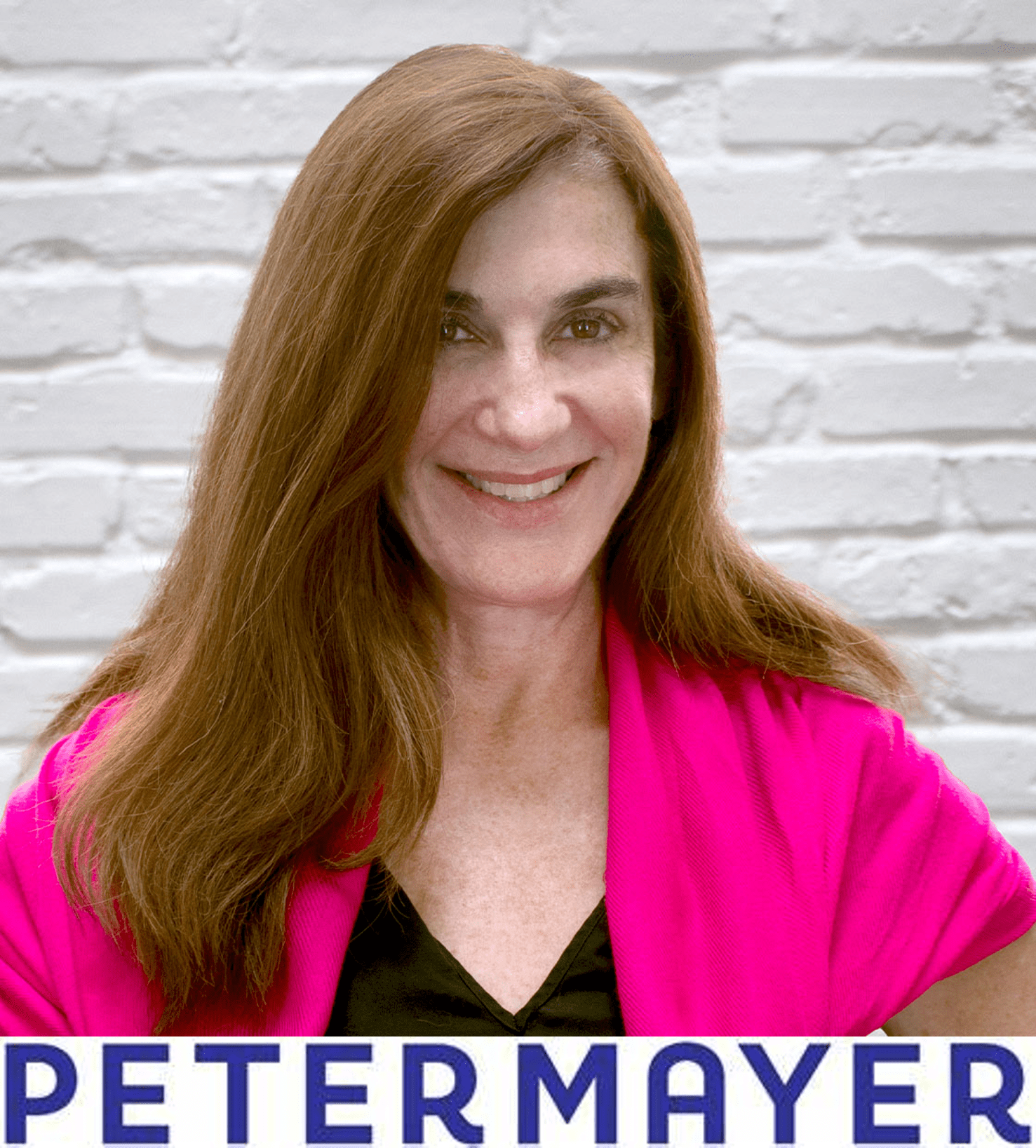 And Hubbell was tasked with doing just that. Their research led to a metric aptly called the Joy Score which “rates a project, experience, category, or brand” on a 1 to 100 scale utilizing a sample of Americans.
And Hubbell was tasked with doing just that. Their research led to a metric aptly called the Joy Score which “rates a project, experience, category, or brand” on a 1 to 100 scale utilizing a sample of Americans.
The Joy Score rating is a great tool for comparing marketing efforts, but more importantly, the PETERMAYER team discovered a solid correlation – 80%, to be exact – between brand joy and the intent to purchase. Thus, the more joy created, the greater the likelihood consumers will buy the product or service.
You can see the symbiosis between joy and consumption in the two charts below for PETERMAYER tourism client that utilized what the agency referred to as a “joy-forward” marketing strategy:
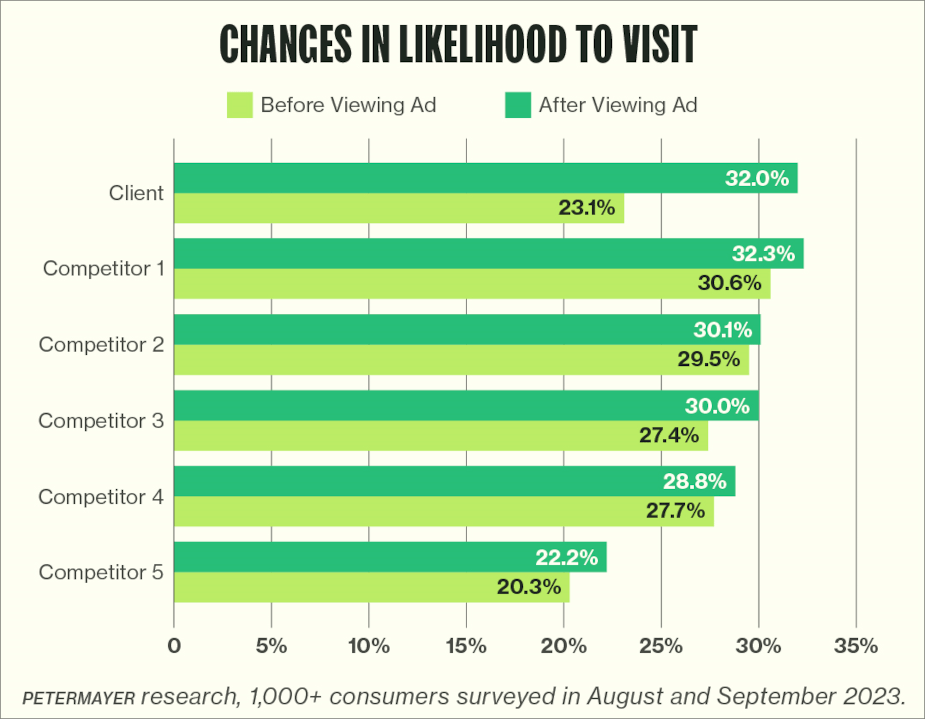
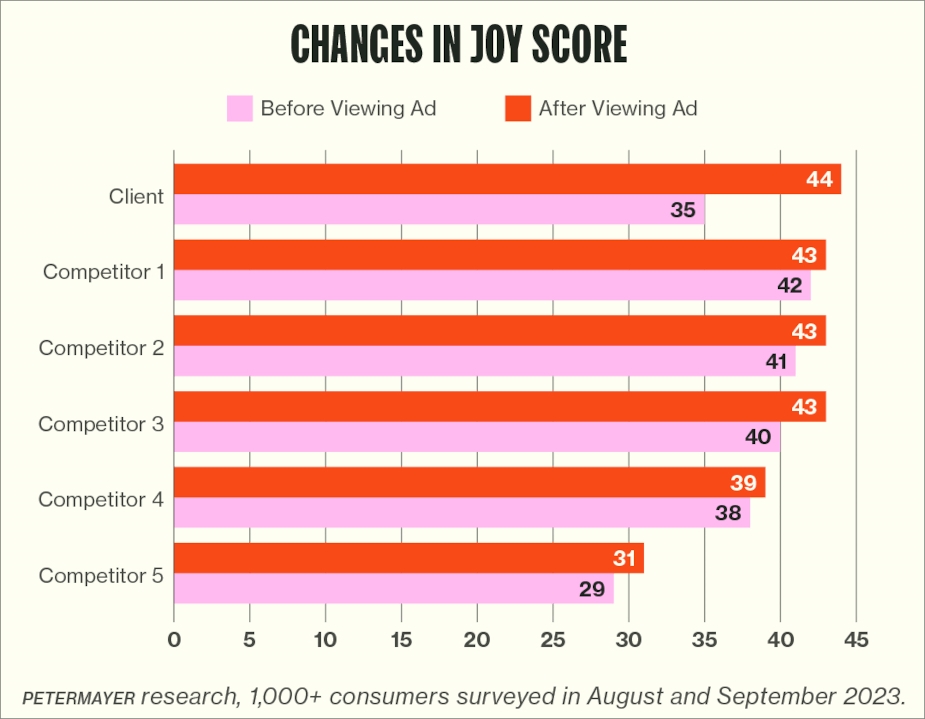
One final point on the PETERMAYER research – and this bodes well for radio. You would think there would be business categories that would be conducive to kindling joy (sports, music, and yes, radio), and others that are essentially joy-less (a legal firm, hi-speed internet provider, etc.).
But as the agency learned, “There may be no such thing as a joyless category! But there are joyless brands, even within joy-inducing categories.”
How many radio stations can we think of that sadly fall into that joyless cul-de-sac where they fall into the routine of sounding the same every day? In spite of being an entertaining, fun industry, there are too many radio stations that go through the motions, rather than making the effort to achieve brand joy?
being an entertaining, fun industry, there are too many radio stations that go through the motions, rather than making the effort to achieve brand joy?
Radio has the power, the history, and the DNA to make people feel good. Unlike consumer brands like Geico, Home Depot, and Tide that have to work overtime to manufacture happiness, radio has the track record and regular access to large audiences as they go about their days.
As the PETERMAYER team reminds us, “joy is as good for business as it is for people.”
At a time when many radio stations have shed P1 listeners, doesn’t it make sense to strike an emotionally positive chord with your cume audience?
How can your station – whether it plays rock or hip-hop, is all-talk, is an NPR News station, or caters to Christian music fans – lean into the joy?
Find joy.
- Memorial Day 2025 – The Year Of Standing On Shaky Ground - May 23, 2025
- To Win In Radio, Make A Difference - May 22, 2025
- Turn Up The Radio (If You Can Find It) - May 21, 2025




Joyful and triumphant.
Oh, come all ye radio faithful?
For the faithful (and the not-so-faithful)!
Amen to the joy !
And here’s to more of it!
Oh, so Three Dog Night was singing about Radio!
Except for the bullfrog part, yes.
Great post today on a topic I’ve given some thought to lately. I think we have to feel joy to be able to express it to other people. It can’t be faked. I don’t think a lot of people in radio are feeling joyful these days.
No, they’re not. And it is especially difficult to muster up joy when you’re not feeling it. In some ways, this is the burden “entertainers” always face. But I agree with you – it’s especially tough now. Thanks for the comment, Abby.
although we are in Canada and the US politics are merely entertainment for us at times 😉 – I believe the same can be said for radio. It’s one of the things that really worked well for us in the pandemic – focusing on helping people feel good. finding the joy.
As challenging as COVID as, Carrie, it wwas a prime opportunity for local radio to remind its audiences just how vital a hometown station can be. I believe many stations and their great staffs did some of their best work during the pandemic.